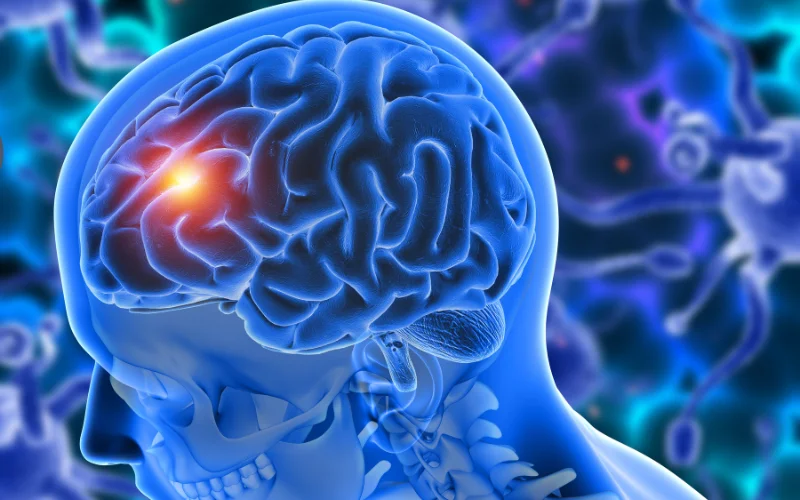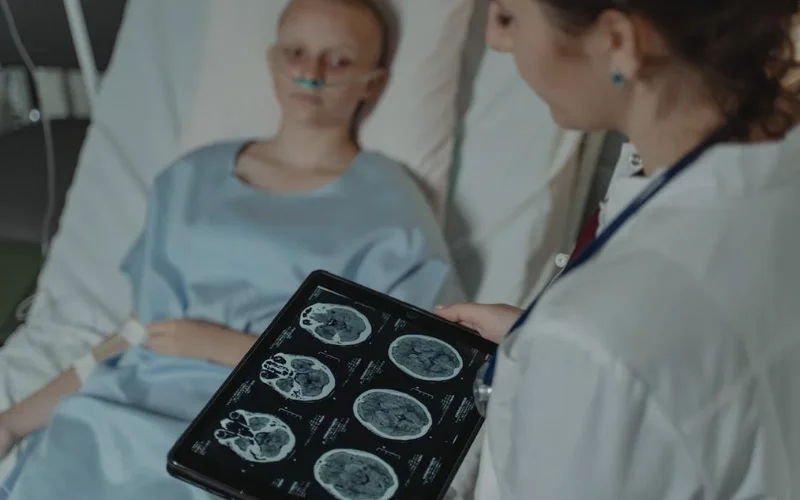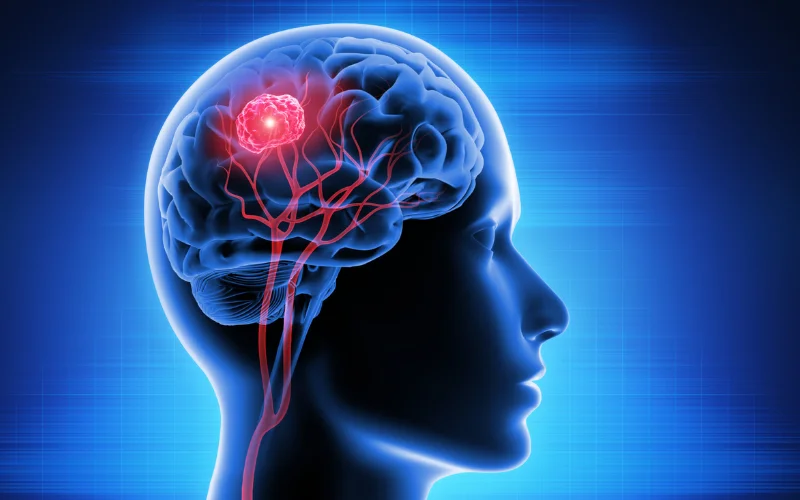Stage 4 brain cancer is an advanced and aggressive form of cancer that significantly impacts the brain and overall health. Understanding the timeline of this condition can help patients, families, and caregivers navigate the complexities of treatment and care. This article aims to provide a detailed, user-friendly guide on the stage 4 brain cancer timeline, including symptoms, treatment options, and what to expect at each stage. By understanding the progression and available treatments, you can make informed decisions and better manage the journey ahead.
Key Takeaways
- Understanding the progression and what to expect.
- Insights into the different stages and severity.
- Information on survival rates and factors affecting prognosis.
- Recognizing the signs and symptoms of advanced brain cancer.
- A detailed look at the disease’s progression over time.
- The importance of supportive care in managing symptoms.
- Techniques to help manage physical symptoms and improve quality of life.
- Addressing the emotional and psychological impact of stage 4 brain cancer.
What is Stage 4 Brain Cancer?

Stage 4 brain cancer, also known as glioblastoma multiforme (GBM), is the most severe form of brain cancer. It is characterized by rapid growth and the ability to spread to other parts of the brain and spinal cord. The prognosis for stage 4 brain cancer is generally poor, with a median survival time of about 12-15 months from diagnosis. However, individual experiences can vary widely depending on various factors such as age, overall health, and treatment response.
How Is Brain Cancer Staged?
Brain cancer staging is a way to describe the extent of cancer in the body. Unlike other cancers, brain tumors are not staged in the same way because they rarely spread outside the brain and spinal cord. Instead, brain tumors are graded based on their appearance under a microscope and their growth rate.
Grading of Brain Tumors
- Grade I: Tumors are slow-growing and less likely to spread.
- Grade II: Tumors grow slowly but may spread into nearby tissue.
- Grade III: Tumors are malignant and grow more quickly.
- Grade IV: Tumors are highly malignant, grow rapidly, and are difficult to treat.
Stage 4 brain cancer falls under Grade IV, indicating a highly aggressive and advanced tumor.
Symptoms and Initial Diagnosis

The symptoms of stage 4 brain cancer can be severe and debilitating. Common symptoms include:
- Severe headaches
- Nausea and vomiting
- Seizures
- Cognitive and personality changes
- Weakness or numbness in limbs
- Vision or speech difficulties
Early diagnosis is crucial for managing symptoms and improving quality of life. Diagnostic tools such as MRI, CT scans, and biopsies are commonly used to confirm the presence of a brain tumor and determine its stage.
Diagnostic Tools
- MRI (Magnetic Resonance Imaging): Provides detailed images of the brain.
- CT Scan (Computed Tomography): Helps in detecting tumors and abnormalities.
- Biopsy: Involves taking a tissue sample to examine under a microscope.
Stage 4 Brain Cancer Timeline Progression
Understanding the timeline of stage 4 brain cancer can help patients and families prepare for the journey ahead. Here is a general timeline of what to expect:
Initial Diagnosis to 3 Months
- Symptoms: Severe headaches, cognitive changes, seizures.
- Diagnosis: MRI, CT scans, biopsy.
- Treatment: Surgery, radiation therapy, and initial chemotherapy.
3 to 6 Months
- Symptoms: Continued cognitive decline, increased physical symptoms.
- Treatment: Ongoing chemotherapy, potential targeted therapy, and palliative care.
6 to 12 Months
- Symptoms: Significant physical and cognitive decline, increased need for palliative care.
- Treatment: Focus on quality of life, managing symptoms, and mental health challenges.
12 Months and Beyond
- Symptoms: Severe physical limitations, potential loss of speech and mobility.
- Treatment: Intensive palliative care, hospice care may be considered.
| Time Frame | Symptoms | Treatment Options |
|---|---|---|
| Initial Diagnosis | Severe headaches, cognitive changes, seizures | Surgery, radiation therapy, initial chemotherapy |
| 3 to 6 Months | Continued cognitive decline, increased physical symptoms | Ongoing chemotherapy, potential targeted therapy, palliative care |
| 6 to 12 Months | Significant physical and cognitive decline | Focus on quality of life, managing symptoms, mental health challenges |
| 12 Months and Beyond | Severe physical limitations, potential loss of speech and mobility | Intensive palliative care, hospice care |
Treatment Options

When dealing with stage 4 brain cancer, treatment options are primarily focused on managing symptoms, slowing the progression of the disease, and improving the quality of life. Given the advanced nature of stage 4 brain cancer, curative treatments are typically not feasible. However, a combination of therapies can help alleviate symptoms and prolong life. Below are the primary treatment options available for stage 4 brain cancer patients.
Surgery
Surgery is often the first line of treatment for brain tumors, including stage 4 brain cancer. The goal of surgery is to remove as much of the tumor as possible without damaging surrounding brain tissue. In some cases, complete removal of the tumor is not feasible due to its location or the risk of harming critical brain functions. Nevertheless, debulking the tumor can help reduce symptoms and improve the effectiveness of other treatments such as radiation and chemotherapy.
Radiation Therapy
Radiation therapy uses high-energy beams to target and destroy cancer cells. For stage 4 brain cancer, radiation therapy can be used to shrink tumors, relieve symptoms, and slow the progression of the disease. It is often administered over several weeks and can be combined with other treatments like chemotherapy. Advanced techniques such as stereotactic radiosurgery (SRS) allow for precise targeting of the tumor, minimizing damage to surrounding healthy tissue.
Chemotherapy
Chemotherapy involves the use of drugs to kill cancer cells or stop them from growing. In the context of stage 4 brain cancer, chemotherapy is typically used in conjunction with other treatments like surgery and radiation therapy. Chemotherapy can be administered orally, intravenously, or directly into the cerebrospinal fluid. While it can help manage the disease, chemotherapy often comes with side effects such as nausea, fatigue, and hair loss, which need to be managed effectively.
Targeted Therapy
Targeted therapy is a newer approach that focuses on specific molecules involved in the growth and spread of cancer cells. These therapies aim to interfere with the cancer’s ability to grow and spread, while minimizing damage to normal cells. Targeted therapy can be particularly effective for certain types of brain tumors that have specific genetic mutations. Drugs such as bevacizumab (Avastin) are examples of targeted therapies used in treating brain cancer.
Immunotherapy
Immunotherapy harnesses the body’s immune system to fight cancer. This treatment option is still under investigation for brain cancer but has shown promise in clinical trials. Immunotherapy can involve the use of checkpoint inhibitors, vaccines, or other agents that stimulate the immune system to attack cancer cells. While not yet a standard treatment for stage 4 brain cancer, ongoing research continues to explore its potential benefits.
Palliative Care
Palliative care focuses on providing relief from the symptoms and stress of the disease. It is an essential component of treatment for stage 4 brain cancer, aimed at improving the quality of life for both the patient and their family. Palliative care can include pain management, nutritional support, physical therapy, and psychological counseling. It can be provided alongside curative treatments or as the main approach when other treatments are no longer effective.
Conclusion
Stage 4 brain cancer is a challenging diagnosis that requires comprehensive care and support. Understanding the timeline of this disease can help patients and their loved ones prepare for the journey ahead. While the prognosis may be daunting, advancements in treatment and palliative care offer hope and improved quality of life for those affected. By staying informed and seeking the best possible care, patients and families can navigate the complexities of stage 4 brain cancer with greater confidence and support.
FAQs
How long can someone live with stage 4 brain cancer?
The median survival time for stage 4 brain cancer is about 12-15 months from diagnosis. However, some patients may live longer with aggressive treatment and supportive care. Factors such as age, overall health, and treatment response can influence survival time.
What are the signs of end-stage brain cancer?
End-stage brain cancer symptoms include severe headaches, seizures, significant cognitive decline, loss of mobility, and difficulty speaking or swallowing. Patients may also experience increased sleepiness, changes in breathing patterns, and decreased appetite.
Can stage 4 brain cancer be cured?
Stage 4 brain cancer is not curable, but treatments can help manage symptoms and improve quality of life. Palliative care plays a crucial role in supporting patients and their families. The focus is on symptom relief, emotional support, and enhancing the patient’s comfort.






